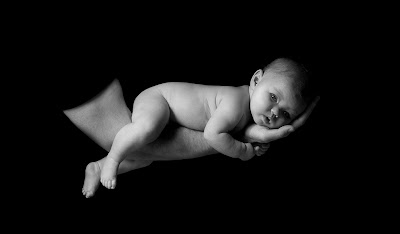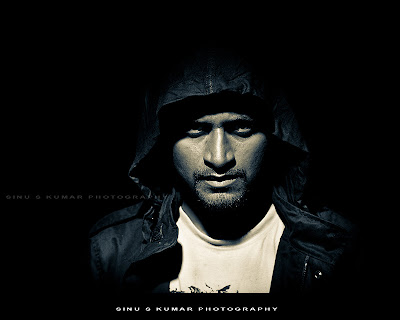Photographic lighting is broadly classified into two High Key lighting and Low Key lighting. The classification is made based on the amount of contrast in an image i.e. the difference in light levels between the shadows areas and highlights. This is achieved by varying the power of the key light and the fill light; otherwise known as the light ratio. Low key lighting has a higher lighting ratio, e.g. 8:1, than high-key lighting, which could even be 1:1.
 |
| Low Key Photography |
In low key lighting setup the shape and contours of the subject appears more pronounced. Due to the presence of shadows, Low key portraits are often very dramatic and do convey a lot of atmosphere and tension.
The two lighting methods discussed above also affects the mood of the photograph. Pictures taken with high key lighting conveys a happy mood perfect for a rich and lively setting and those taken in low key lighting convey more drama and intensity perfect setting for a horror film kind of scene.
Low Key Lighting for Photography
Of the two methods discussed above low key lighting effect is the easiest to achieve. The equipments needed are also bare minimum. It could even be achieved with just one strobe or an off camera flash. It is also possible to take perfect low key images using available light, only make sure that you place your subject in such a way that the subject gets at least a couple of stops more light that its surroundings.
 |
| Photo By Sibi |
The picture above was taken inside of a small coffee shop, the subject was mad to stand in front of a door leading to the inner room which was considerably darker thus making a pure black background.
One could easily master this lighting technique, only remember that your final image will consist of predominantly shadow regions and only the main subject either in full or part will be illuminated.
So the idea is to control the spread of your light source so that it only illuminates the areas you desire. That brings various photographic light modifiers like barn doors, snoots, grid spots, cutters, flags etc to use.
A point to note is that you will either need a professional studio or a considerably dark room or area to work, if you do not have access to such facilities you could just find a relatively dark space and it will suffice. Low key shots could be taken outdoors when the amount of sunlight available is relatively low, like in early morning and late evening. The larger the room the easier it will be to work, you could put some distance between the subject and your background and thus it becomes easier to light your subject without the fear of light reaching the background (light contamination).
 |
| Photo By Russrobinson |
Lighting could be achieved even with a single light. What is important is the direction and strength of your light source; it is what determines the mood of the picture. You could also use a reflector or a second light source to control the amount of shadows. A second light source gives you more control over light ratios than a reflector does. Use any light modifier that suits your purpose to control the spread of light. Remember in low key lighting setup the primary element of composition is the shadows. Make sure no light is spilling especially on to the background.
 |
| Photo By Seanmolin |
If you have a fairly large dark room to work with you could do without a black background, else having a black background is very convenient, especially if the level of ambient light is high and there is some light spill happening from your light sources.
Camera Settings for Low Key Lighting
To get clean noise free images and to eliminate chances of ambient light contamination set your camera to the lowest ISO setting.
It is recommended to shoot in RAW format as it gives you much more control in adjusting highlights and shadows during post processing.
 |
| Low Key Photography |
If you are using ETTL or ITTL compatible lights then you could easily shift your camera to Aperture Priority (AV) mode, set the desired aperture and do a test shot, examine it in your LCD screen, check the histogram and add exposure compensation if necessary.
The other approach is to go the manual way, set the camera to manual mode, since you need no ambient light to register set your shutterspeed at your camera’s sync speed, set the desired aperture value (configure light power accordingly) and shoot.
Black and White is the most widely used mode for low key photography but when the lighting is right even color photographs could be just as effective.
 |
| Low Key Photography |
Since your picture consists predominantly shadows, all the attention of the viewer is immediately directed to the portion of the frame that is illuminated. It takes good knowledge of light, shadows and tones and skill to control shadow detail to make a good low key photograph. Do experiment with your lighting (strength, direction and light ratios) and subject placement till you get the shadows to fall exactly where you want them.
In the next article we will discuss about Photography - Photography Techniques - High Key Photography
Post a Comment